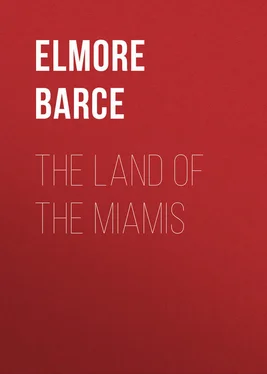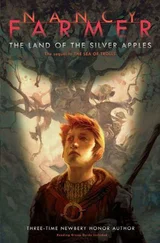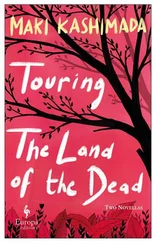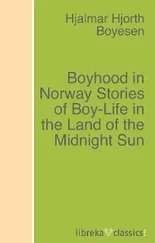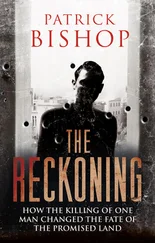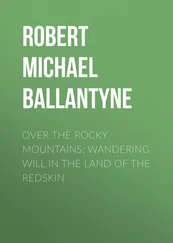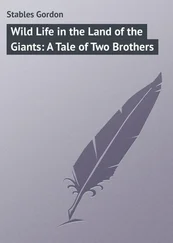Elmore Barce - The Land of the Miamis
Здесь есть возможность читать онлайн «Elmore Barce - The Land of the Miamis» — ознакомительный отрывок электронной книги совершенно бесплатно, а после прочтения отрывка купить полную версию. В некоторых случаях можно слушать аудио, скачать через торрент в формате fb2 и присутствует краткое содержание. ISBN: , Жанр: foreign_antique, foreign_prose, Историческая проза, на английском языке. Описание произведения, (предисловие) а так же отзывы посетителей доступны на портале библиотеки ЛибКат.
- Название:The Land of the Miamis
- Автор:
- Жанр:
- Год:неизвестен
- ISBN:http://www.gutenberg.org/ebooks/30244
- Рейтинг книги:4 / 5. Голосов: 1
-
Избранное:Добавить в избранное
- Отзывы:
-
Ваша оценка:
- 80
- 1
- 2
- 3
- 4
- 5
The Land of the Miamis: краткое содержание, описание и аннотация
Предлагаем к чтению аннотацию, описание, краткое содержание или предисловие (зависит от того, что написал сам автор книги «The Land of the Miamis»). Если вы не нашли необходимую информацию о книге — напишите в комментариях, мы постараемся отыскать её.
The Land of the Miamis — читать онлайн ознакомительный отрывок
Ниже представлен текст книги, разбитый по страницам. Система сохранения места последней прочитанной страницы, позволяет с удобством читать онлайн бесплатно книгу «The Land of the Miamis», без необходимости каждый раз заново искать на чём Вы остановились. Поставьте закладку, и сможете в любой момент перейти на страницу, на которой закончили чтение.
Интервал:
Закладка:
This great network of lakes, rivers and portages was in turn connected by the waterways of the Ottawa and the St. Lawrence, with the great head and center of all the fur trade of the western world, the city of Montreal.
The only practicable means of communication was by the canoe. Most of the territory of the northwest, being, as General Harrison observes, "remarkably flat, the roads were necessarily bad in winter, and in the summer the immense prairies to the west and north of this, produced such a multitude of flies as to render it impossible to make use of pack horses." Bogs, marshes and sloughs in endless number added to the difficulties of travel. Hence it was, that the power that commanded the lakes and water courses of the northwest, commanded at the same time all the fur trade and the Indian tribes in the interior. France forever lost this control to Great Britain at the peace of 1763, closing the French and Indian war, and at the close of the revolution it passed to us by the definitive treaty of 1783.
The importance of the posts of Detroit and Michillimacinac, forming the chief connecting links between the northwest and the city of Montreal, now fully appears. First in importance was Detroit. It commanded all the valuable beaver country of northern Ohio and Indiana, southern Michigan, and of the rivers entering Lakes Erie and Huron. The trade coming from the Cuyahoga, the Sandusky, the tributaries of the Miami and Scioto, the Wabash and the Maumee, all centered here. The French traders, and after them the British, did a vast and flourishing business with the savages, trading them brandy, guns, ammunition, blankets, vermilion and worthless trinkets for furs of the highest value. The significance of the old trading posts at Miamitown (Fort Wayne), Petit Piconne (Tippecanoe), Ouiatenon, and Vincennes, as feeders for this Detroit market by way of the Wabash and Maumee valleys, is also made plain. A glimpse of the activities at Miamitown (Fort Wayne), in the winter of 1789-1790, while it was still under the domination of the British, shows the Miamis, Shawnees and Potawatomi coming in with otter, beaver, bear skins and other peltry, the presence of a lot of unscrupulous, cheating French traders, who were generally drunk when assembled together, and who took every advantage of each other, and of the destitute savages with whom they were trading. At that time the French half-breeds (and traders) of the names of Jean Cannehous, Jacque Dumay, Jean Coustan and others were trading with the Indians at Petit Piconne, or Tippecanoe, and all this trade was routed through by way of the Wabash, the portage at Miamitown, and the Maumee, to Detroit. The traders at Ouiatenon, who undoubtedly enjoyed the advantage of the Beaver lake trade in northwestern Indiana, by way of the Potawatomi trail from the Wabash to Lake Michigan, were also in direct communication with the merchants of Detroit, and depended upon them. It is interesting to observe in passing, that the rendezvous of the French traders at the Petit Piconne (termed by General Charles Scott, as Keth-tip-e-ca-nunk), was broken up by a detachment of Kentucky mounted volunteers under General James Wilkinson, in the summer of 1791, and utterly destroyed. One who accompanied the expedition stated that there were then one hundred and twenty houses at this place, eighty of which were shingled; that the best houses belonged to French traders; and that the gardens and improvements around the place were delightful; that there was a tavern located there, with cellars, a bar, and public and private rooms. Thus far had the fur trade advanced in the old days.
CHAPTER III
THE BEAVER TRADE
– A description of the wealth in furs of this section at the close of the Revolutionary War and the reasons of the struggle for its control.
Perhaps no country ever held forth greater allurement to savage huntsmen and French voyageurs than the territory acquired by Clark's conquest. Its rivers and lakes teemed with edible fish; its great forests abounded with deer, elk, bears and raccoons; its vast plains and prairies were filled with herds of buffalo that existed up almost to the close of the eighteenth century; every swamp and morass was filled with countless thousands of geese, ducks, swan and cranes, and rodents like the beaver and other animals furnished the red man with the warmest of raiment in the coldest winter.
To give some idea of the vast wealth of this domain in fur bearing animals alone, it may be taken into account that in the year 1818 the American Fur Company, under the control of John Jacob Astor, with headquarters at Mackinaw, had in its employ about four hundred clerks and traders, together with about two thousand French voyageurs, who roamed all the rivers and lakes of the Indian country from the British dominions on the north, to as far west as the Missouri river. Astor had established a great fur business in direct competition with the British Northwest Company and commanded attention in both London and China. The "outfits" of this company had trading posts on the Illinois, and all its tributaries; on the Muskegon, Grand, Kalamazoo and other rivers in Michigan; on the line of the old Potawatomi trail from the Wabash country to post Chicago, and in the neighborhood of the Beaver lake region in northern Indiana, and at many other points. The furs handled by them consisted of the marten (sable), mink, musk-rat, raccoon, lynx, wildcat, fox, wolverine, badger, otter, beaver, bears and deer, of which the most valuable were those of the silver-gray fox and the marten. The value of these furs mounted into the hundreds of thousands of dollars and they were originally all consigned to New York. For these interesting observations history lovers are indebted to the autobiography of the late Gurdon S. Hubbard of Chicago, who was, in his youth, in the employ of Astor, and who later in his lifetime conducted a trading post at Bunkum, now Iroquois, in Iroquois County, Illinois. It has been estimated that in the days of England's control of Canada and of all the northwest territory, that more than half in value of all the furs exported "came from countries within the new boundaries of the United States," that is, from the district north and west of the Ohio river.
Of all the fur-bearers, the most interesting were the beavers. How much these industrious gnawers had to do with the French and Indian wars and the rivalry between England and France for the control of their domain north of the Ohio, is not generally appreciated. An animal that could be instrumental in part, in bringing about an armed conflict between the two greatest powers of that day, should not be entirely eliminated from history.
At the time of Braddock's defeat, Colonel James Smith, then a boy, was captured by what seems to have been a party of the Caughnawaga Indians, some of whom lived along the rivers and streams in northern Ohio. He lived among the savages for some years and was adopted into one of their families. Later in life, he left a written account of many of his experiences, and among other things he tells us some interesting things concerning the beavers. "Beavers," says Caleb Atwater, an Ohio historian, "were once here in large numbers on the high lands at the heads of the rivers, but with those who caught them, they have long since disappeared from among us." Before the Revolution, and for some years afterward, they were caught by the Indians in great numbers. Smith had a valuable friend among the Indians by the name of Tecaughretanego. He was quite a philosopher in his way, but he was rather inclined to believe, like most of his fellows, that geese turned to beavers and snakes to raccoons. He told Smith of a certain pond where he knew all the beavers were frequently killed during a hunting season, but they were just as thick again on the following winter. There was seemingly no water communication with this pond, and beavers did not travel by land. Therefore it must be that the geese that alighted here in great numbers during the fall, turned to beavers, and for proof of this assertion the Indian called Smith's attention to their palmated hind feet. The boy suggested that there might be subterranean passages leading to this pond, whereby the beavers could gain access to it, but Tecaughretanego was not entirely convinced.
Читать дальшеИнтервал:
Закладка:
Похожие книги на «The Land of the Miamis»
Представляем Вашему вниманию похожие книги на «The Land of the Miamis» списком для выбора. Мы отобрали схожую по названию и смыслу литературу в надежде предоставить читателям больше вариантов отыскать новые, интересные, ещё непрочитанные произведения.
Обсуждение, отзывы о книге «The Land of the Miamis» и просто собственные мнения читателей. Оставьте ваши комментарии, напишите, что Вы думаете о произведении, его смысле или главных героях. Укажите что конкретно понравилось, а что нет, и почему Вы так считаете.
